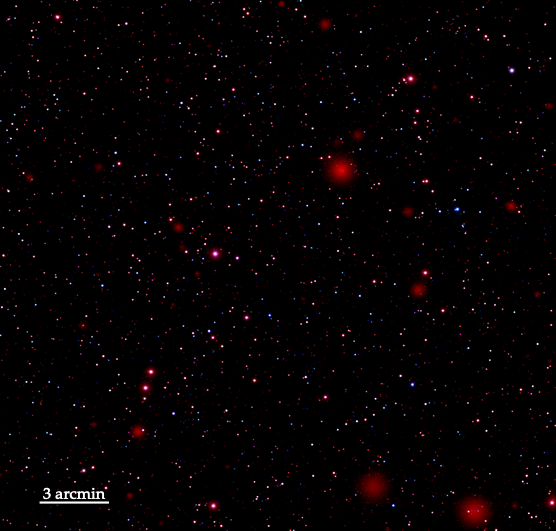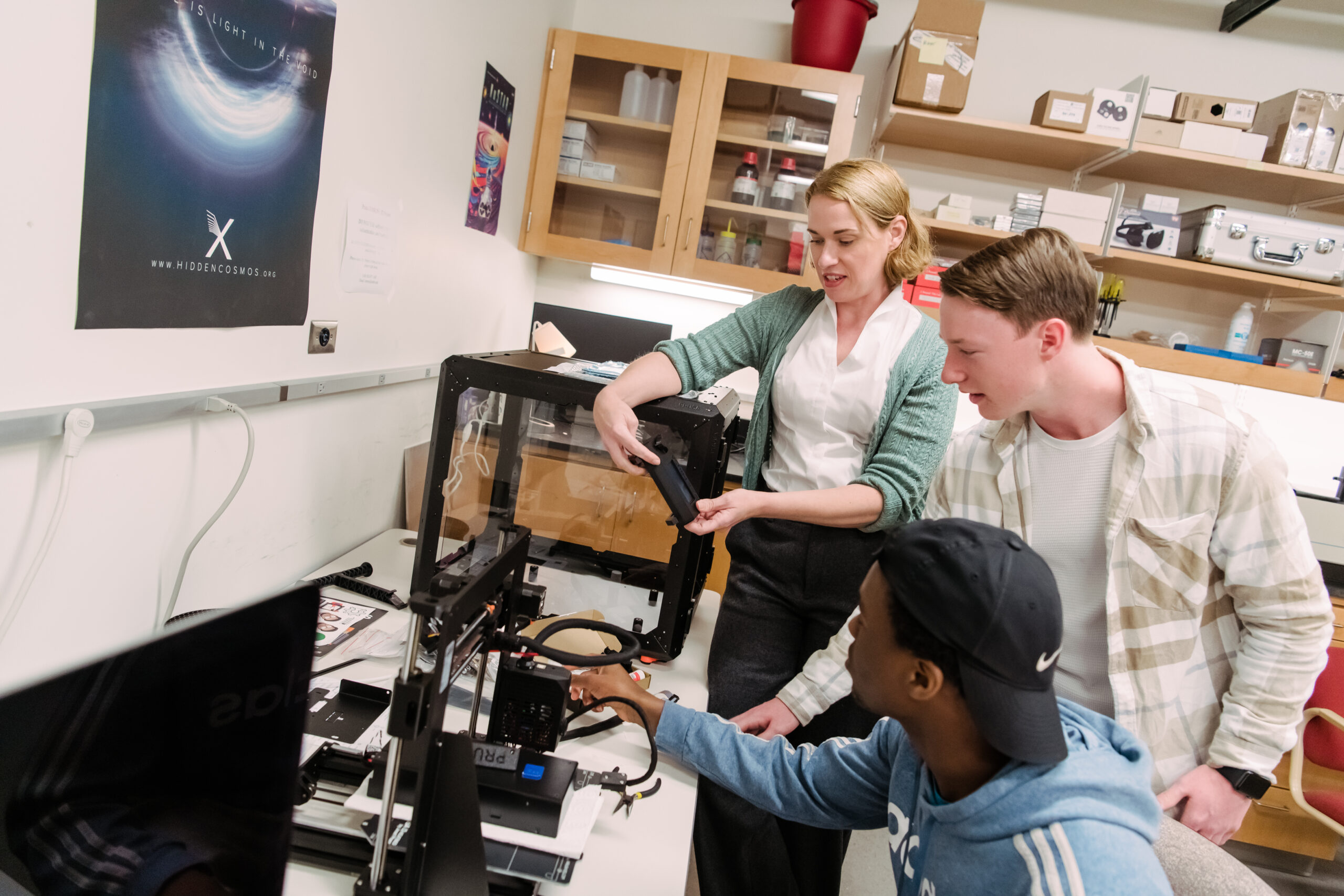Nearly a year ago, a group of engineers and scientists including UMBC physicists became one of 10 teams to successfully submit a proposal to NASA to develop the Advanced X-ray Imaging Satellite (AXIS). In October, the AXIS team learned that they were one of the final two instrument designs selected for further development. Over the next year, each of the two teams will receive $5 million to flesh out their plans as part of what NASA calls a “Phase A study.” Then NASA will review the proposals and select one of these two instruments for construction and testing, with plans to launch in the early 2030s.
Adi Foord, assistant professor of physics, and Eileen Meyer, associate professor of physics, serve on the AXIS leadership team, and during the proposal development phase, Foord co-led the sub-team focused on supermassive black hole evolution. The AXIS team is led overall by Chris Reynolds at the University of Maryland, College Park and deputy lead Erin Kara at MIT.

X-rays come from extremely hot processes such as exploding stars or the accretion of black holes, so tracing them back to their source can paint a picture of galactic formation. As scientists search for life beyond Earth, X-rays could even offer clues about potentially habitable planets.
“We’re extremely excited that AXIS has been chosen for Phase A study! AXIS represents a huge leap forward in high-resolution and high-sensitivity imaging that will allow us to study the early universe and trace the growth of the earliest supermassive black holes,” Foord says. “It’s a unique opportunity to answer some of the most fundamental questions in astrophysics. With AXIS, we’ll have the sensitivity and resolution to detect faint X-ray signals from galaxies in the early universe, offering unprecedented insight into how supermassive black holes formed and evolved over cosmic time.”
A new kind of explorer

AXIS and the other satellite design selected for further study, PRIMA—also led by scientists in College Park—are competing to be the first in the new Probe Explorer class of NASA missions, which fit neatly between its flagship missions and smaller missions.
“Both of the selected concepts could enable ground-breaking science responsive to the top astrophysics priorities of the decade, develop key technologies for future flagship missions, and offer opportunities for the entire community to use the new observatory, for the benefit of all,” said Nicola Fox, associate administrator, Science Mission Directorate at NASA Headquarters.
“In observational astronomy we are now in the era of big and sensitive surveys of large portions of the sky,” Meyer adds. “AXIS is not only 10 times more sensitive than its predecessor, the Chandra X-ray Observatory, it also has the ability to make high-resolution images over a much larger sky area, or field of view. This is transformative for deep surveys, and AXIS will synergize with a lot of other missions and observatories operating in the 2030s.”

